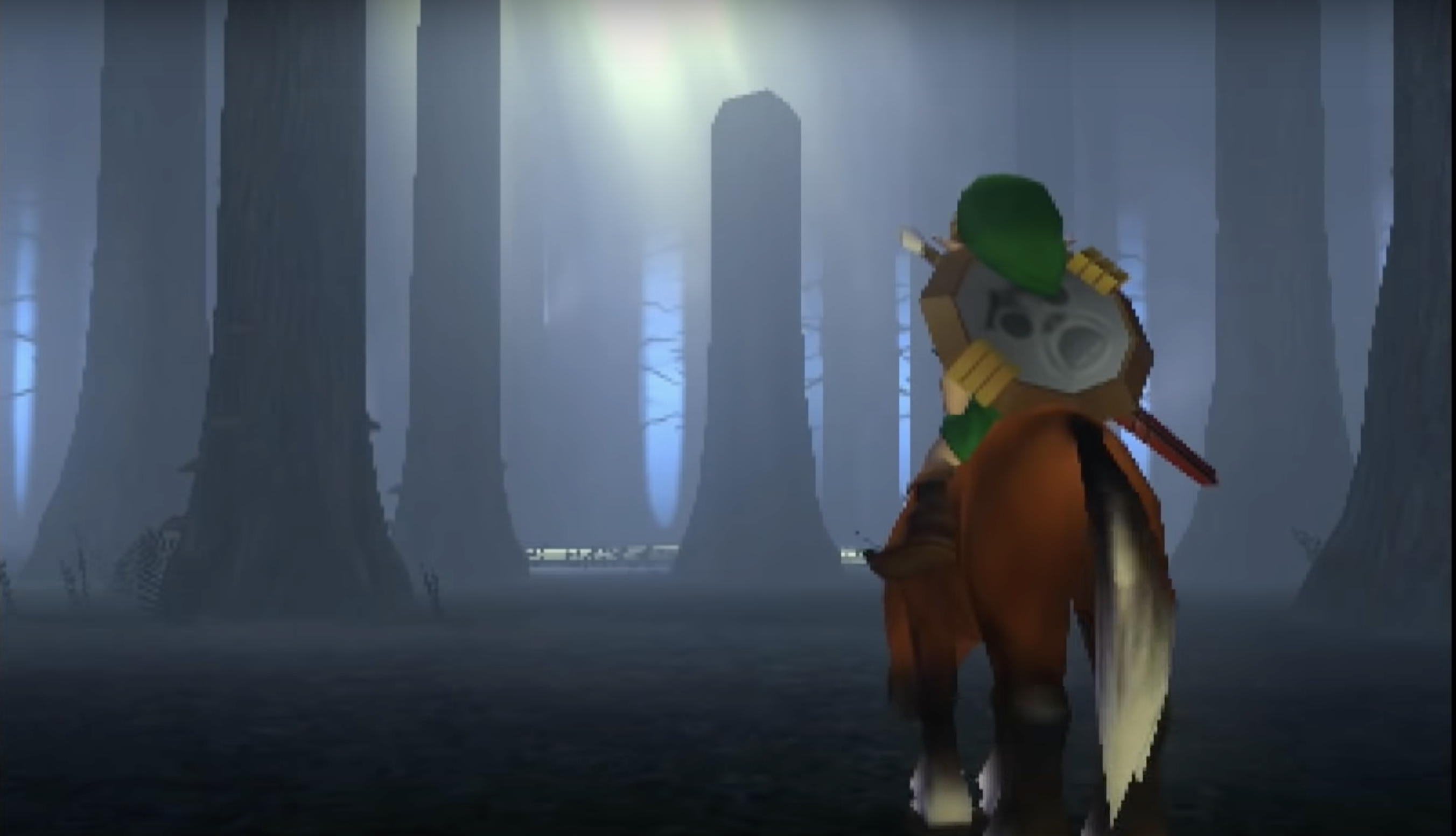Table of Contents Show
Ask any Zelda fan and they’ll tell you “Majora’s Mask” (2000) has a reputation. Tales of it being the darkest, strangest Zelda game skirt across forums and in the whispers to new fans. Designed under a ridiculous time crunch that mirrors the mechanics of the game, “Majora’s Mask” definitely earns the reputation it gets — existentialism, nihilism, death, grief ooze out of the game’s pores by design. With a constantly repeating on-screen countdown to doom and a lonely, possessed child threatening to rip the moon from the sky, everything from the imagery to the gameplay narrative push this notion, and it’s a far cry from “Ocarina of Time” (1998). It is my absolute favorite Zelda game because of the sheer depth it has to offer and its replayability as a result of its design.
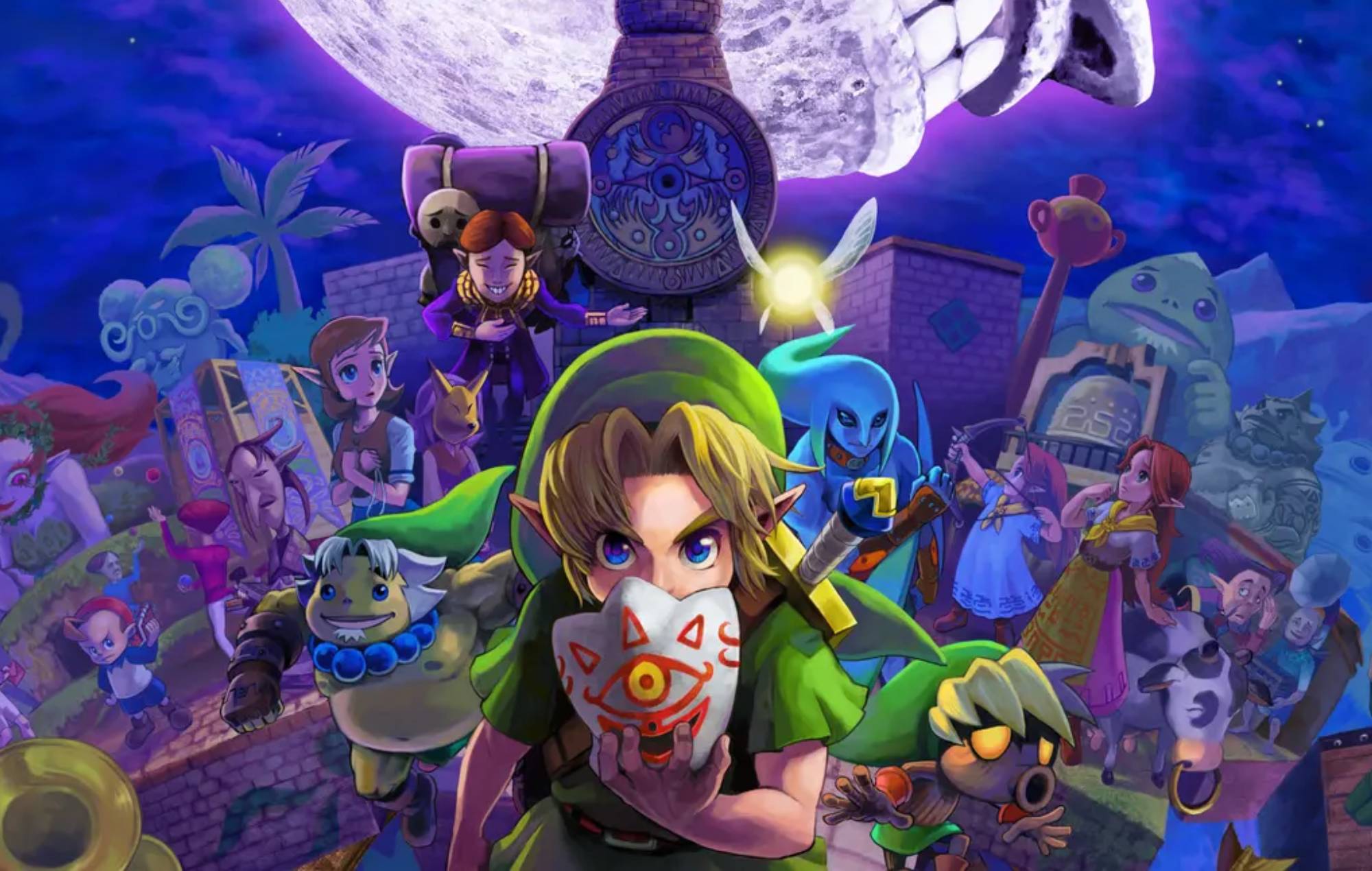
Much like its predecessor, though, “Majora’s Mask” doesn’t deliver its secrets right off the bat, something game director Eiji Aonuma has pointed out before. Rip off the curtain of “Ocarina of Time,” and you’ll find a story about forced maturity, the messiness of adulthood, and what it would mean to start from square one, all placed on the shoulders of Link. “Majora’s Mask,” however, like all sequels do in some way, continues the narrative of its predecessor as a way to explore handling grief, healing, and introspection — Link healing from the trials of “Ocarina of Time.”
In my previous article about “Ocarina of Time,” Navi and her role in the game came up very little— an unfortunate result of having so much ground to cover. Her contributions to “Ocarina of Time” live in legendary infamy, and her cries of “Hey, Listen!” Can be heard in the nightmares of people who’ve played “Ocarina of Time” for more than five minutes. Navi is, regardless, an important individual in Link’s life and the catalyst that sets the events of “Majora’s Mask” in motion.
Who Is Navi?
Navi, named for her role as a navigator, was initially designed for “Ocarina of Time” as a way to implement a Z-targeting system, a system that lets players target and lock on to a specific enemy. This system is everywhere in games today, but Navi, acting as the marker for this system, was the first of her kind ((Satoru, Iwata. “Original Development Staff – Part 1.” Iwata Asks, Nintendo. )). Naming her Navi, though, instead of keeping her an impersonal market, caused the development staff to do what they do best — develop her. She became a guide to Link and an integral part of what made the first location of “Ocarina of Time,” the Kokiri Forest, function by making focused dialogue possible. In a narrative sense, though, Navi’s addition allowed them to further expand on the plot of Link not having a fairy at the start of “Ocarina of Time” and then parting with one at the end once her purpose was completed ((Satoru, Iwata. “Original Development Staff – Part 1.” Iwata Asks, Nintendo. )).
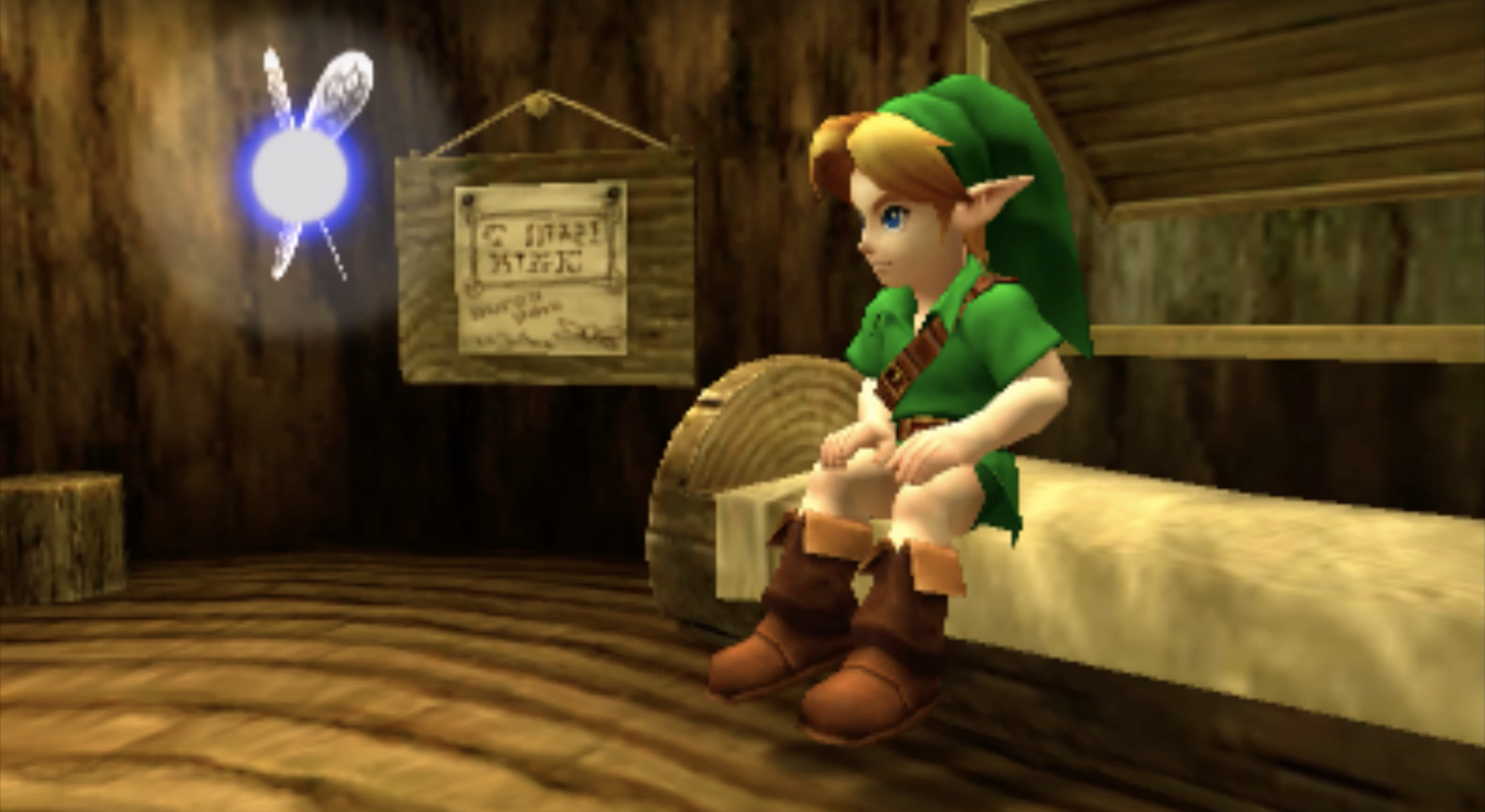
Navi, therefore, represents Link’s growth. She’s there to guide Link through childhood into adulthood, the singular character to accompany him throughout his journey in “Ocarina of Time.” All Kokiri, the race Link initially thinks of himself as before learning his actual origins, have a fairy by their side, but the Kokiri are also bound to permanent childhood. They don’t age and they don’t grow — Link does. Link is forced to experience things well beyond his age to prepare him for the penultimate battle to save Hyrule, and through all of it, Navi stands as the one individual to follow Link through time, to connect him back to his life before the quest to slay the tyrant Ganondorf. Simply put, Navi connects Link to his childhood.
Navi’s departure at the end of “Ocarina of Time” is the ultimate symbol of Link’s maturation. He gains maturity, but it comes at the price of Link losing the final link to his life before he met Zelda. Navi parts without a single word to Link and leaves just as Zelda returns him to the past and his childhood body one last time. Link, naturally, wants to find his friend, wants to understand why the one person to consistently help him and be there for him, left. And so, “Majora’s Mask” begins.
Starting Over As A Scrub
Link has a rough start in “Majora’s Mask,” and it gets worse before it gets better, which at this point is par for the course for him. While searching through the Lost Woods to find Navi, Link is accosted by two fairies Tatl and Tael who startle his horse, temporarily knock him out, allowing the third member of their party, Skull Kid, to root through Link’s belongings. When Link takes off after Skull Kid, clinging to his stolen horse, he gets thrown into a pit in the Lost Woods, areas that have the ability to spit individuals into different areas from where they entered. Skull Kid takes the opportunity to curse Link and turn him into a Deku Scrub, plant-like creatures that are among the most cowardly and weak of the two games, and escapes down a corridor while also leaving Tatl behind.
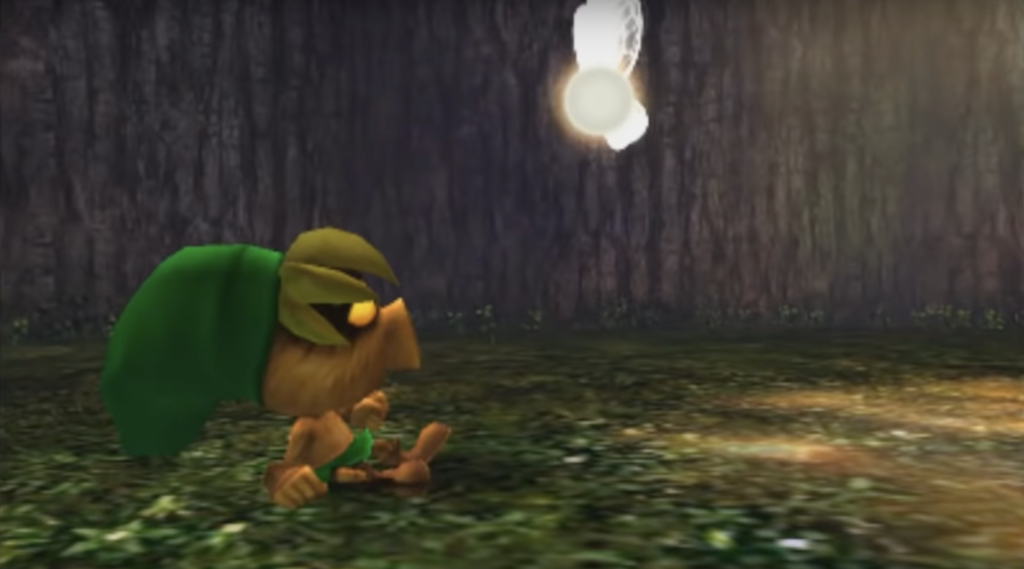
Having no choice but to follow them, Link and Tatl, who has nowhere else to go and no other means to find her friend and her brother Tael, follow Skull Kid and find themselves on the inside of a clock tower. Ominously greeted by a man who looks exactly like the Happy Mask Salesman from the last game, largely because it’s implied he is the same salesman just like Skull Kid is the same individual Link can optionally teach Saria’s Song to, they step out into Clock Town in the land of Termina.
It is the Dawn of the First Day.
“You’ve been met with a terrible fate, haven’t you?”
Happy Mask Salesman. “majora’s Mask.” Nintendo. 2000.
It’s inarguable to say that Link went through a lot in “Ocarina of Time,” but the start of “Majora’s Mask” in no way pulls its punches. Once again trapped in an unfamiliar body unable to even lift a sword with a fairy that loathes him, Link is without any allies in a land he doesn’t know. The beginning of “Majora’s Mask” is alienating in a way few other “Zelda” games are. Link has a completely new move set, look, and nothing like he was before. Even the twists and turns of Clock Town make for a difficult time keeping track of locations and people Link needs to converse with to figure out how to reach Skull Kid and reclaim both himself and the stolen Ocarina of Time (( Liam Triforce, director. The Bittersweet Comfort of Majora’s Mask, YouTube, 28 Nov. 2020. )).
Because the very nature of the game is unfamiliar, it forces Link to seek out the people of Clock Town for answers. Trouble is, Link isn’t the Hero of Time or bearer of the Triforce of Courage — Link is a Deku Scrub and when the people aren’t commenting on that, they’re commenting on the fact he’s a child Deku Scrub. It’s far and away from his last journey where he had the authority and resources to go wherever and do whatever he needed.
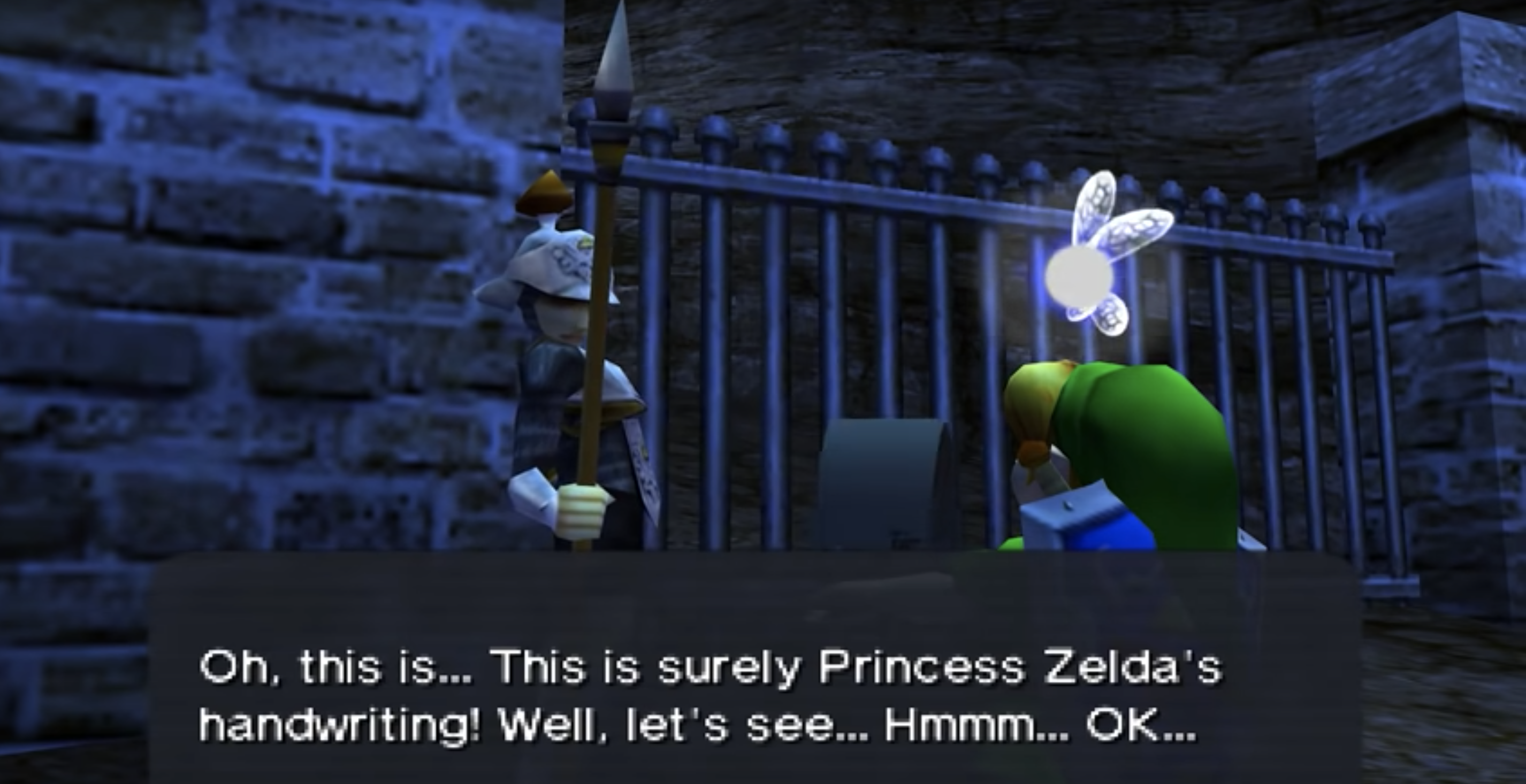
In a lot of ways, the beginning of “Majora’s Mask” is meant to emulate the loss of stability. Then again, that raises the question, what stability does he have left (( Gray, Kate. “Feature: Zelda: Majora’s Mask Is A Testament To What Nintendo Is Capable Of When It Gets Weird.” Nintendo Life, Nintendo Life, 13 Mar. 2021. ))? By being sent back in time, he was already torn from a Hyrule he came to know back into a Hyrule he no longer fits in without many of the abilities and equipment and relationships he came to possess — in a lot of ways, “Majora’s Mask” just takes this to the next level for him. This is all extremely important to note, but we’ll get back to this in a moment. There are, after all, a few other things on Link’s mind — the moon, its face twisted in a grimace, and tear-shaped rocks falling from its yellowed eye, is getting closer.
Time, Time, And More Time
It’s not implemented until the end of the first cycle, but “Majora’s Mask” very much does take place in a timeloop. After finally climbing to the top of the clock tower to confront Skull Kid, Skull Kid attempts to destroy Termina by pulling the moon from the sky into the earth. Tael has enough time to tell Link and Tatl to journey to the four lands to find the four guardians of Termina to stop Skull Kid. Link, seeing a vision of Zelda, plays the Song of Time and draws him and Tatl back to when they first left the clock tower.
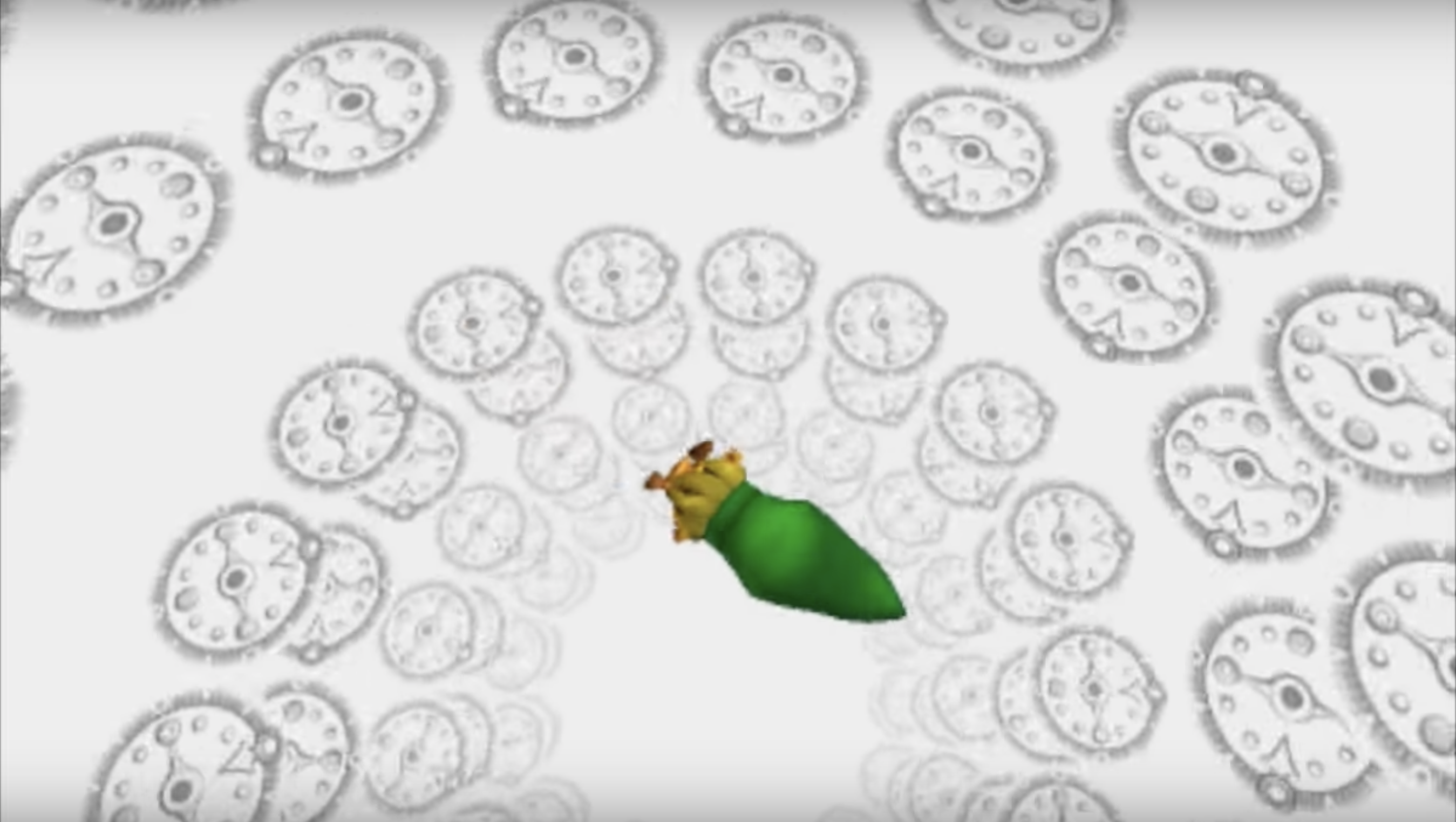
Inside the tower, they’re confronted again by the Happy Mask Salesman. He teaches Link the Song of Healing, an inversion of Saria’s Song, that allows Link to lay to rest the Deku Scrub spirit possessing him and to gain its abilities in the form of a removable mask. The Salesman also tells Link of the mask possessing Skull Kid: a powerful, evil mask that possesses an amazing threat and one Skull Kid stole from the Salesman. This marks the beginning of the main questline started by Tael and the Salesman: find the Giants, steal back Majora’s Mask from Skull Kid, and stop the moon from falling.
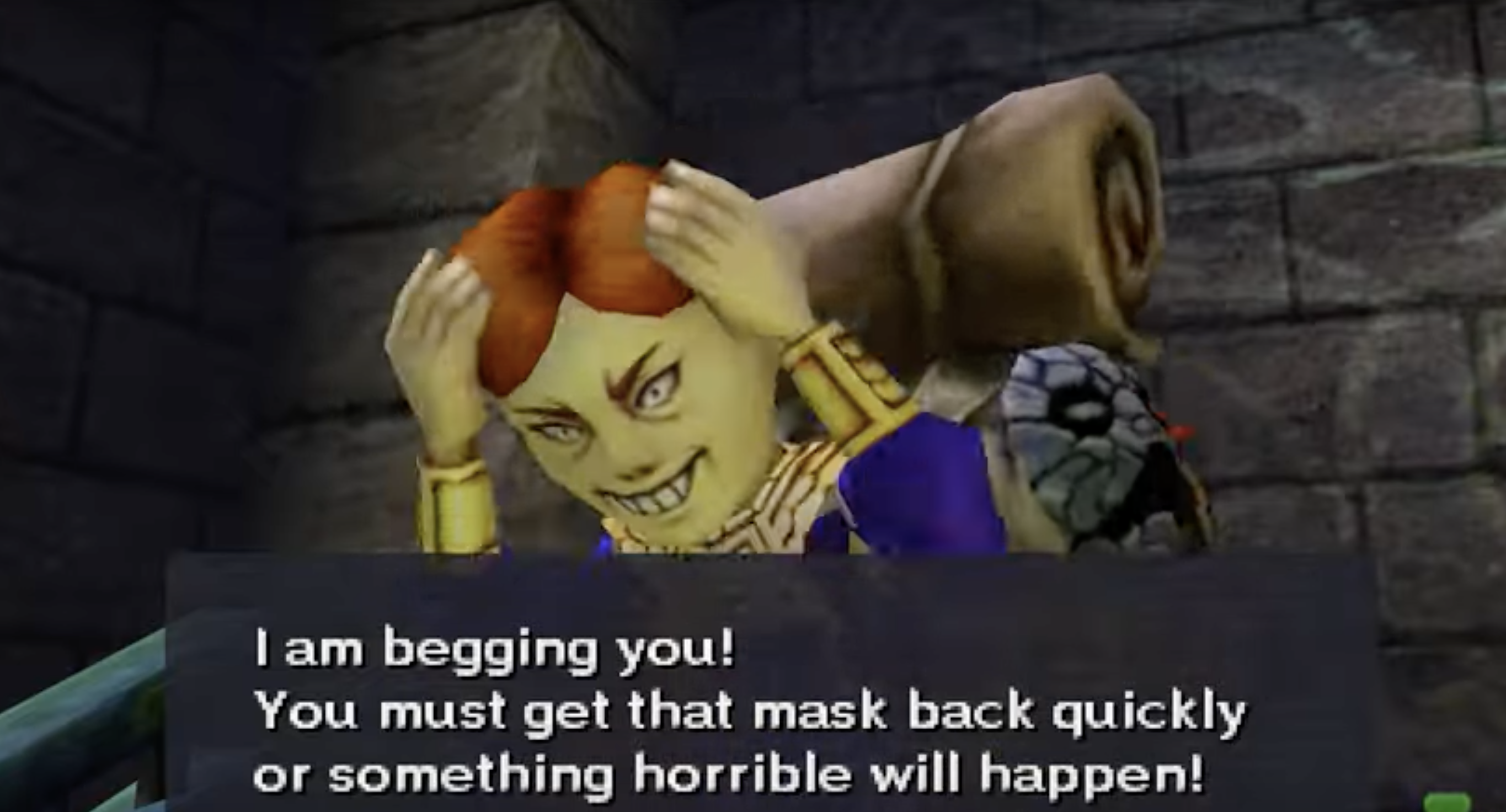
In a lot of ways, “Majora’s Mask” is the anti-”Zelda” title. There’s no sprawling narrative with centuries-long stakes or a prophecy. There is no Master Sword, no one who knows of Link’s status as the Spirit of the Hero. There are just the residents of Termina, Link, and a being who wants to erase all of it but is forcibly stopped by the Song of Time before it can succeed (( RagnarRox, director. Majora’s Mask Is A Timeless Masterpiece, YouTube, 27 Dec. 2020. )). Remember how I said we’d get back to how “Majora’s Mask” is unfamiliar and alienating? Time to get back to that.
Making The Unknown Known
“Majora’s Mask” might be strange, off-putting, it doesn’t stay that way for long. In between progressing through the four main Temples, Link has little else to do in the three days of his cycle but talk to the people in Clock Town and in the surrounding regions. The game makes sure to make it worth his while, too, because just about each and every person Link can talk to has something they need help with. From a player’s perspective, this amounts to well over fifty quests Link can choose to take, and that’s a conservative estimate.
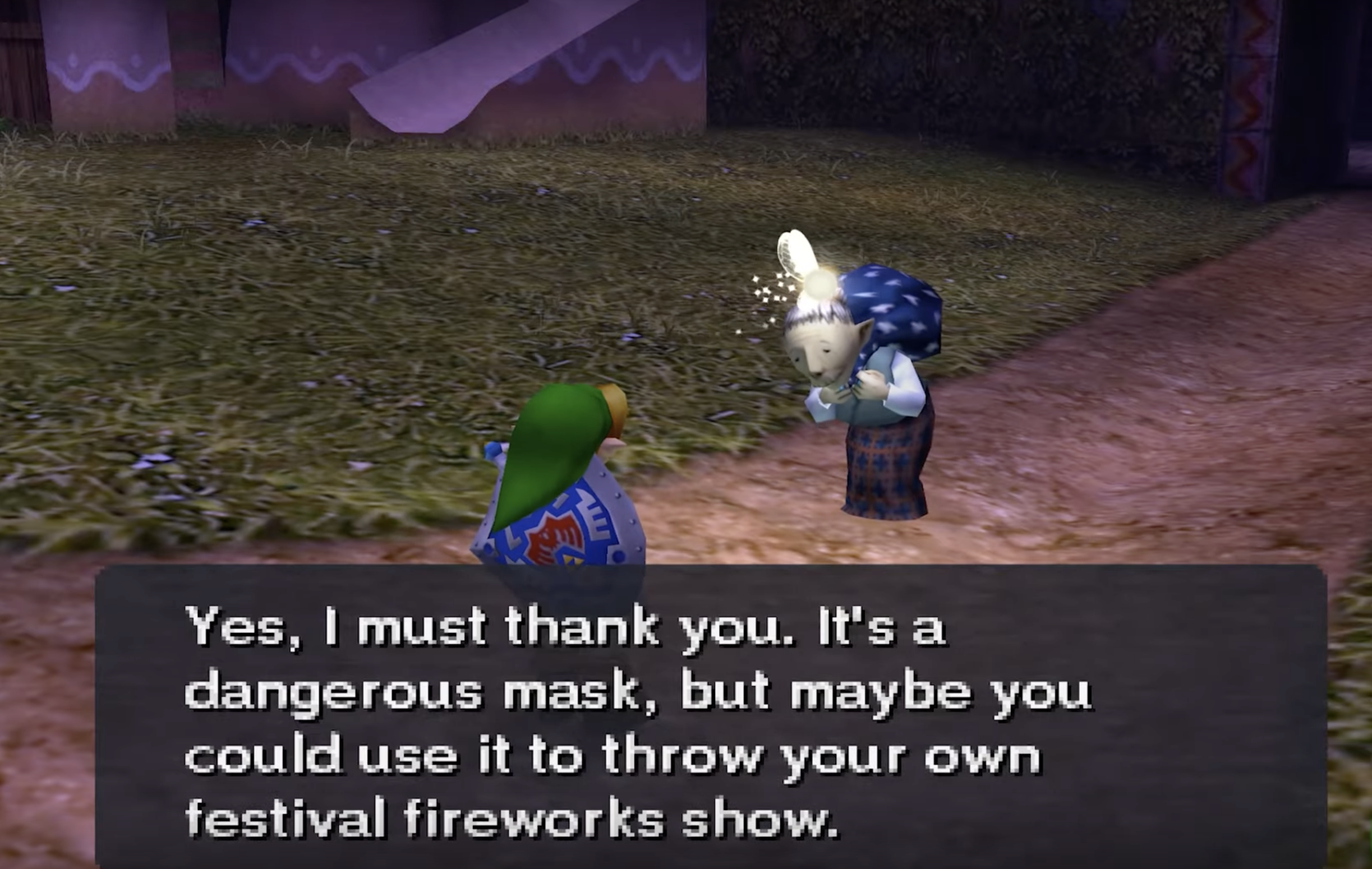
Each and every person that needs something has something to offer Link, with the catch that if Link wants to get that reward, the person (or people) needs to be helped before the final day concludes, otherwise the cycle completely resets. In “Ocarina of Time,” the people of Hyrule are a backdrop to Link’s quest. He helps them by killing Ganondorf and, in the end, doesn’t even get to see them freed of Ganondorf’s rule. “Majora’s Mask” flips this script entirely.
Connection (Or How To In The First Place)
Link is defined by his silence. Link, this iteration of Link who features in both “Ocarina of Time” and “Majora’s Mask,” is also defined as a protagonist who shoulders his burdens quietly, without complaining. He is characterized by sacrifice. He sacrifices his home, his childhood, his innocence, for the sake of others. There’s no time for Link to connect with people, no time for Link to play or dance or play his ocarina for any purpose other than teleporting to the next dungeon. “Majora’s Mask” introduces a new concept to Link: that helping others does not need to come at a personal cost and can relieve burdens and build connections instead of adding hardships and breaking ties.
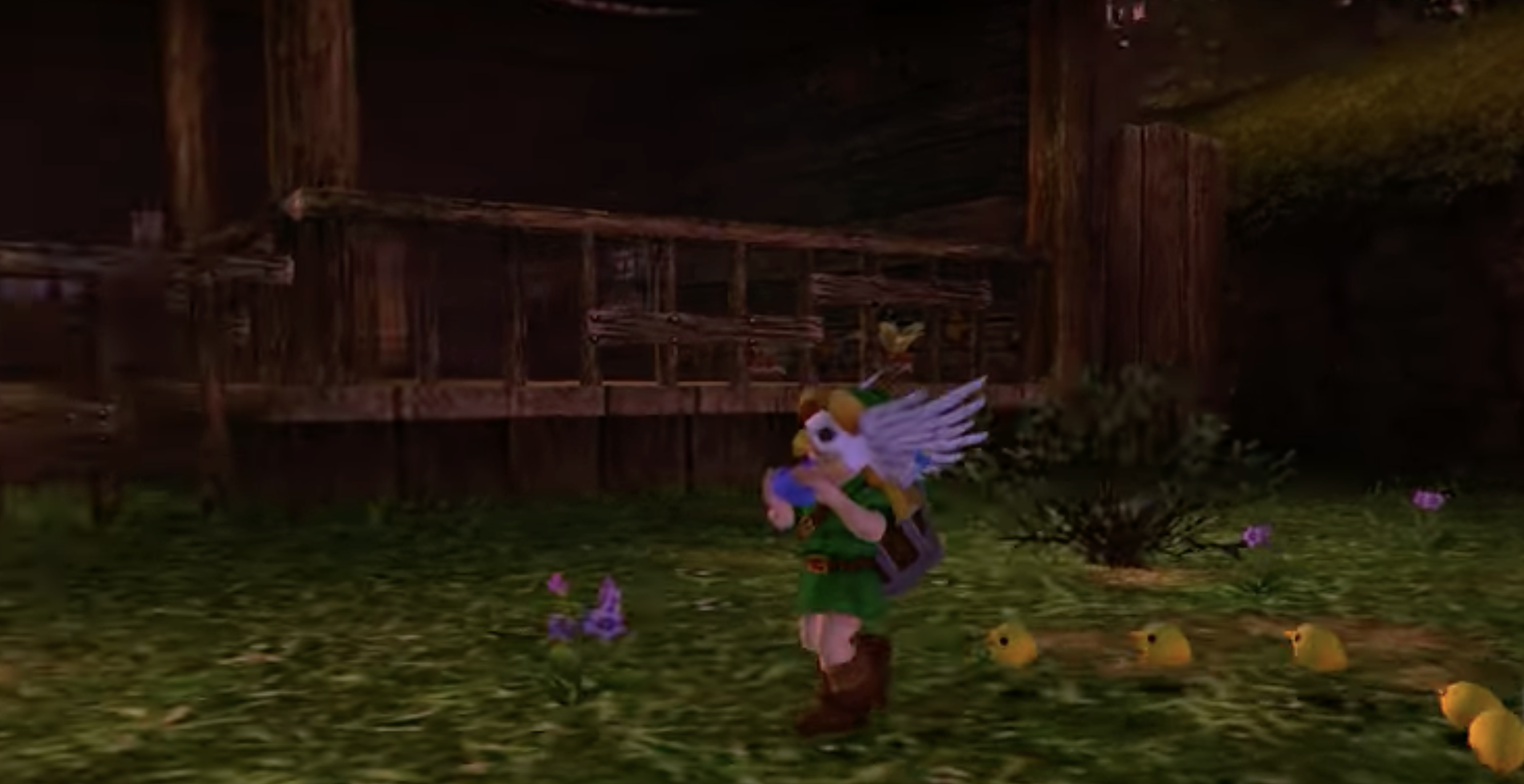
One of the first side quests available to Link in “Majora’s Mask” after the tutorial and beginning the timeloop is putting on a bird mask and marching with baby chicks to make a man smile. He gets a set of downright adorable (and ridiculously useful) rabbit ears in return. Ironically, a three-day deadline to doom is exactly what Link needed to regain the ability to connect with people and connect with himself in the process. The tutorial forces Link to talk to people like the Bomber Secret Society to gain a crucial notebook that logs the patterns and routines of everyone in Clock Town and find from the townspeople how to get to the strange scientist in the Clock Town Observatory to use his telescope to find out Skull Kid’s on the top of the clock tower in the first place, but this all is for a specific goal. It’s a means to an end to progress the main plot and teaches the necessity of interaction with others. (( Liam Triforce, director. The Bittersweet Comfort of Majora’s Mask, YouTube, 28 Nov. 2020. )).

Termina and its residents have problems. Link doesn’t need to solve them but considering one of two endings relies on him doing so, let’s assume he does. Link might be a stoic individual, but if he’s willing to sacrifice pieces of himself for the greater good, it has to be assumed he’d also be willing to parade with some chickens and put on a silly mask (gained by dancing with a lonely spirit) to reteach some dancers how to perform their act for the Carnival of Time.
“Majora’s Mask” is infinitely more personal than other Zelda games, its predecessor included, because “Majora’s Mask” focuses solely on Link. More specifically, it focuses on Link’s impact on others and him finding himself, who he really is, after the events of “Ocarina” (( Nexpo, director. Majora’s Mask and the Art of Dark Symbolism, YouTube, 13 Oct. 2018. )). It’s almost, in a weird way, just Link’s day-to-day life. The timeloop restarts, Link completes various tasks and tracks different routines and figures out his priorities for the next loop, and so starts the dawn of the next new day.

Connecting with others is Link’s first step to reconnecting with himself, reconnecting with the Link who took pleasure in running errands and saw merit in playing the mini-games in Castle Town, something erased in the dystopic future-Hyrule while Link is an adult. To compound matters, Link has to help the residents of Clock Town as himself. When trapped as a Deku Scrub, the townsfolk pay him no mind. The vast majority of quests are undertaken as Link who is a complete stranger in town. He’s nothing special, not really — he’s just Link.
Make no mistake, however, that just because Link begins to reconnect with his lost sense of fun doesn’t mean that Link loses the maturation and heaviness he gained in “Ocarina of Time.” “Majora’s Mask” has the reputation it does for a reason, after all.
Transforming Grief
Masks, the cornerstone of “Majora’s Mask,” can be gained through side quests, but those masks like the aforementioned bird mask (Bremen Mask) and the rabbit ears (Bunny Hood) are by no means essential to finish the game. The three main transformation masks are, however. These three masks are, quite literally, the restless spirits of the dead. One Link never has the opportunity to speak to, the second he sees as a ghost, and the third he gets to watch die. Each of the masks has a very tangible influence on Link. Literally, in the sense that they cause an extremely painful transformation to occur when he puts them on, figuratively in that he takes on their burdens.
“We’re talking about masks that were created to contain the memories of people who have died. Often there are things they really wanted to do before they left this world, so becoming them is actually really painful because it’s like hosting a really powerful spirit that’s coming into you.”
Eiji Aonuma. “Aonuma Answers More Majora’s Mask Questions.” Zelda Dungeon. 2015
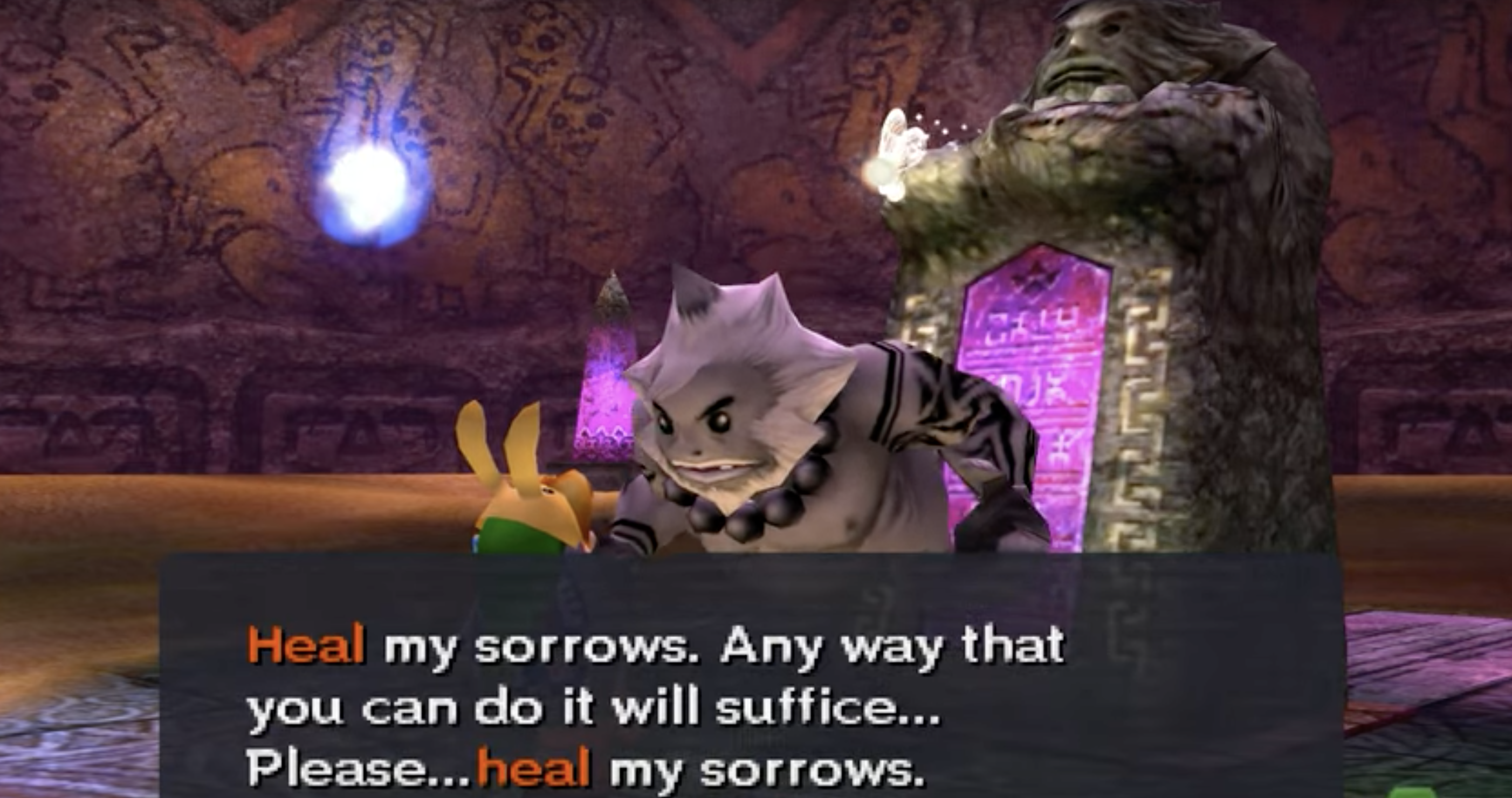
The Goron Mask is the first transformation mask Link obtains where he knows the spirit inside. Darmuni III, the spirit, was a warrior who fell trying to stop the endless winter caused by Majora to save his people from freezing to death. All he wants is for his sorrows to be eased, which can be done by playing the Song of Healing. Mikau, a Zora, is found by Link on the verge of death after trying and failing to recover his partner’s eggs and pleads with Link to help recover the eggs to return his partner’s voice for him. Link must play the Song of Healing to allow his spirit to rest and obtain the Zora Mask.
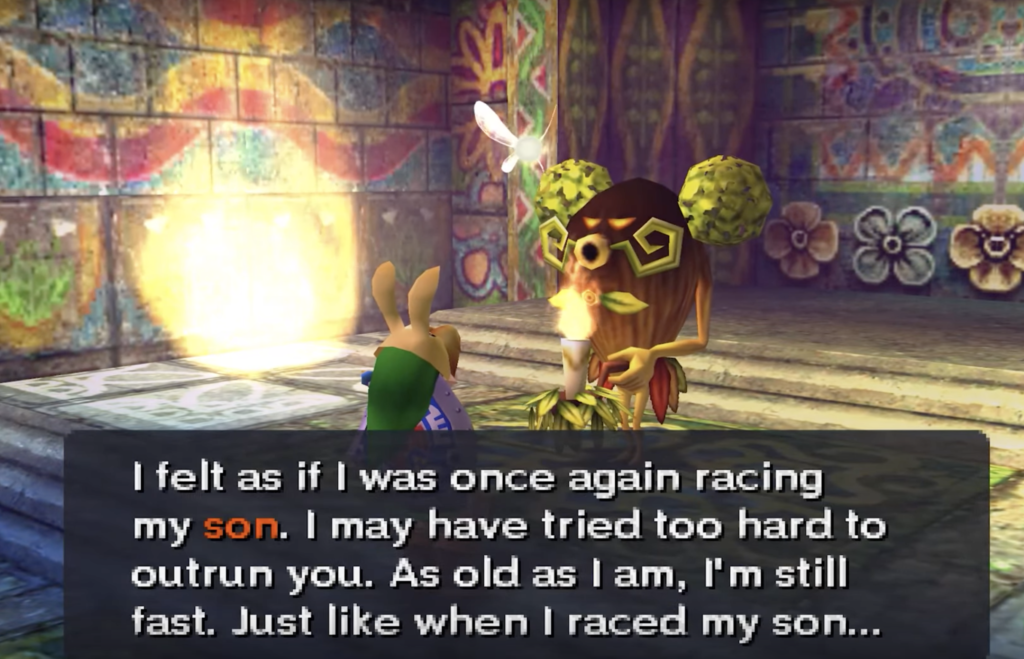
The Deku spirit, the only one Link never gets to meet, is the son of a butler Link does have the opportunity to interact with. It is implied all the spirit wishes is to race his father one last time. The one constant between all of them, aside from being masks, is the need for healing.
Song Of Healing
Like the song it was derived from (Saria’s Song), the Song of Healing is an extremely prevalent motif in “Majora’s Mask.” If Link can’t stop the moon from falling, the least he can do is help work through the griefs of the people he interacts with. In order to gain the masks, Link must soothe the masks’ spirits and take up their mantels. This requires the spirits to reach a point of peace, acceptance with their failures to allow their grief to be lessened, mended.
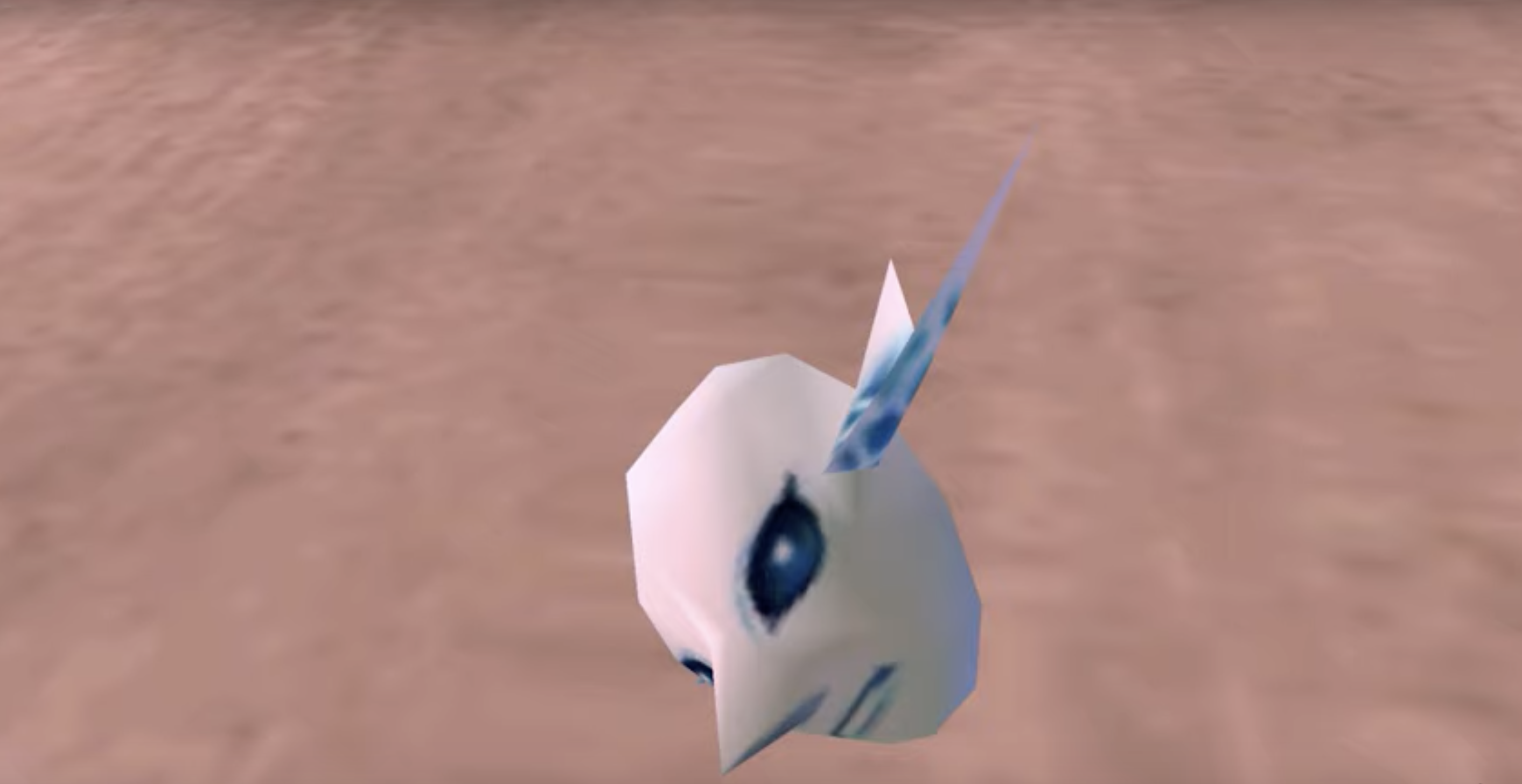
Not very coincidentally, Link needs to do the same with himself. It can be argued that each of the three spirits represents something from “Ocarina of Time” that Link never had the opportunity to process. With the Deku spirit, it’s Link not being able to properly see his home one last time before pulling the Master Sword from its pedestal; with Darmuni III, it’s not being able to prevent Ganondorf’s rule and turning Hyrule into a living hell for seven years; with Mikau it’s failing to save the Sages from death, even if their deaths were necessary to kill Ganondorf. Through these spirits, Link is able to work through his own grief, work through his own trauma. Link is able to forgive.
Acceptance And Forgiveness
Forgiveness is a huge part of “Majora’s Mask,” but a theme that only begins to become apparent in the later stages of the game. This makes sense, considering that both of these things can only occur after a degree of healing — after all, how can you forgive and accept something if you have no idea what you should be forgiving or accepting in the first place?
The Giants
The Guardian Deities of Termina, the Four Giants, were once friends with Skull Kid. Tatl mentions this close to the start of the game, but it takes a bit before Link can hear the whole story — once again, he gains this information by helping the residents of Termina. The story goes that the Giants befriended an imp who became lost and alone after their departure to protect Termina. Ridden with grief, the imp caused mischief and malice. As punishment, the Giants gave him the option of leaving Termina forever or face death. The imp left and was eventually found by Tatl and Tael who offered companionship, even if the imp, Skull Kid, still yearned for his once-friends. Majora likely used this lingering resentment to use Skull Kid as a vehicle to curse the Giants to ensure Termina’s destruction.

The third Giant, who Link meets after purifying the Great Bay Temple, asks simply: “help our friend.” Tatl believes this to be the fourth Giant, but it’s heavily implied that they want Skull Kid to be free of Majora’s influence. She also notes later that the fourth Giant seems saddened by the suggestion of stopping Majora by killing Skull Kid. In a slow, tempered text, the fourth Giant leaves one final message:
“forgive your friend.”
Maybe this means Tatl should forgive Skull Kid, and that’s one valid interpretation, but while Tatl is the dominant voice talking to the Giant, Link is also there. Link who began “Majora’s Mask” desperately searching for Navi just like Skull Kid once did for the Giants. Link needs to forgive Navi for leaving, needs to forgive Zelda for sending him back to his past, needs to forgive himself for being a child unaware of Ganondorf’s schemes. Link needs to accept, and Link needs to forgive.
The Culmination Of “Majora’s Mask’s” Side Quests
There is one side quest that can only truly be attempted around the time Link confronts the final Giant. This side quest is by far the most complex “Majora’s Mask” has to offer and by far the most difficult to complete. Needing two cycles to complete, Reuniting Kafei and Anju is, in a lot of ways, emblematic of acceptance. To make a long story short, before he can marry his fiance, a man named Kafei is turned into a child by Skull Kid a month before the wedding. Instead of confronting his fiance Anju, he attempts to visit the Clock Town Great Fairy to be healed and has his wedding mask stolen in the process. He goes into hiding, leaving Anju worried it is her fault he disappeared but terrified to look for him in case it’s her fault he left.
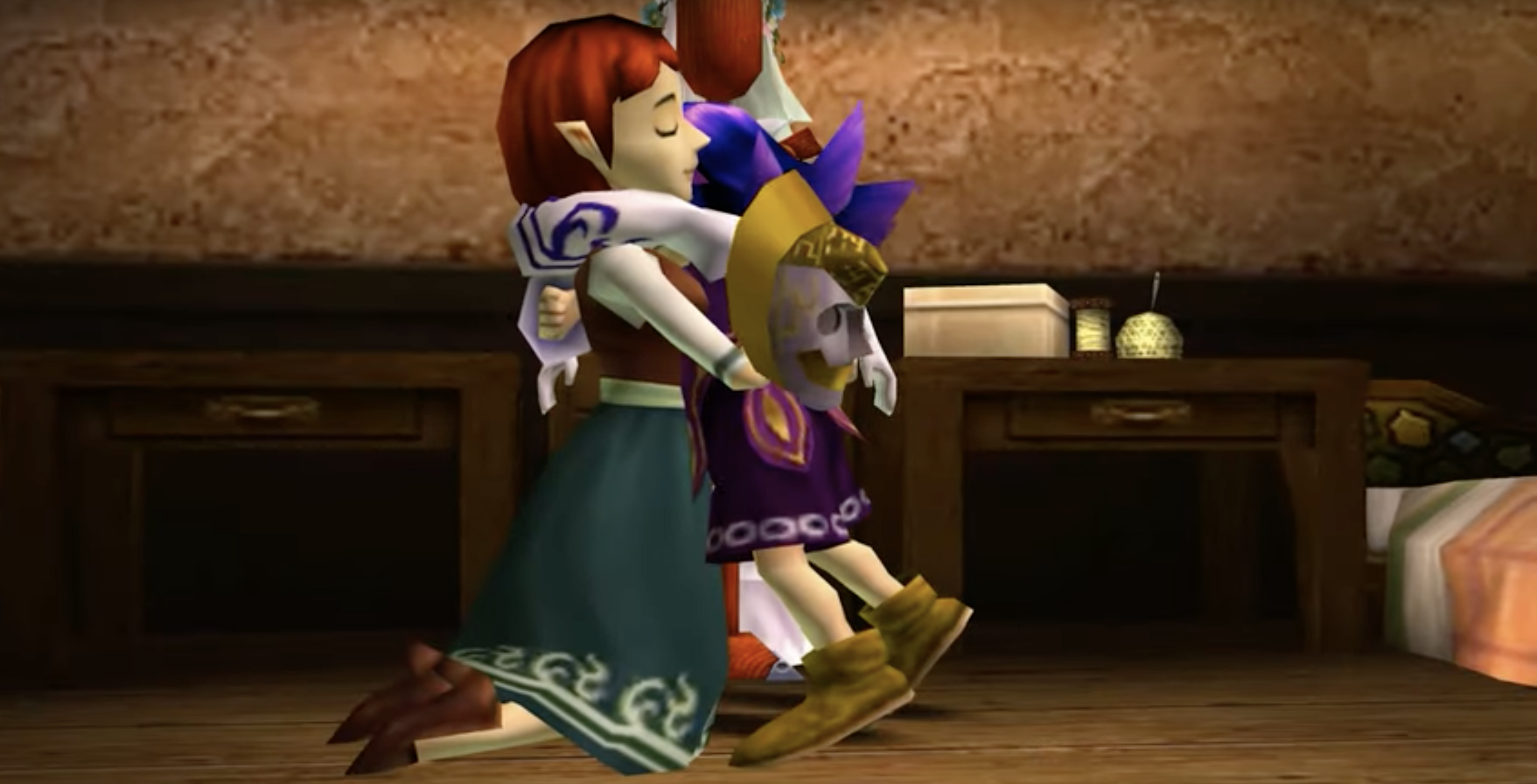
Link helps Kafei reobtain his wedding mask and reunites the couple just before the moon crashes into Clock Town, as the wedding has to occur on the Final Day of the cycle by necessity because of the pace of the side quest. Unlike the celebration at the end of “Ocarina of Time,” Link gets to witness Kafei and Anju exchange their vows and see Anju accept Kafei as he is because even if he’s changed, he’s still the man she fell in love with. Link even gets to keep their combined mask, the Couple’s Mask, as thanks for his efforts, and the mask remains even after the cycle resets like all other masks do, a permanent symbol of their acceptance and their love.
They forgave each other, and Kafei, an adult stuck as a child, a situation very much mirroring Link’s, found happiness. If he can, why can’t Link? Link, who spends the majority of “Majora’s Mask” helping people, seeing them recover from their problems without having to worry about failure, without having to worry about the moon falling and the destruction it causes as a permanent (( RagnarRox, director. Majora’s Mask Is A Timeless Masterpiece, YouTube, 27 Dec. 2020. )). In a way, by the time Link helps Kafei and Anju he already has.
All he has to do is make sure their happiness stays.
Inside The Moon
If Link plays the song taught to him by the Giants, the Oath to Order, while confronting the Majora-possessed Skull Kid, the Giants appear to stop the moon for as long as they can, giving Link the chance to confront Majora. Majora abandons Skull Kid, though, and escapes inside the moon.
Inside of the moon is a beautiful meadow softened by ethereal light with a singular aged oak in the middle — that is, it is if Link collected all of the masks. Around the tree are five children to who Link can gift masks and be given four challenges in return, each of which requires a specific transformation mask to finish. If Link successfully finishes them, the children ask him questions. Are your friends really your friends? What makes you happy? Is it the happiness of others? Is doing the right thing what makes people happy?

Is the face under your mask your true face? It doesn’t take much to realize the children are asking Link questions relating to his journey. Was Navi, was Tatl, were Zelda and Sheik, were any of them ever Link’s friends? Is it helping people, the small errands or the sprawling adventures, what makes Link happy? Is Link helping people good not just for them, but for himself? Who is Link? Is he the Hero of Time, is he the Kokiri boy without a fairy? “Majora’s Mask” is about Link discovering the answer to these questions, is about Link looking inwards to figure out what everything he’s done the last two games was about. The point of the game is that Link is all of those things. Link is Link, and that’s enough, someone who does what is right because helping people is always worth it.
Fierce Deity
There is one transformation mask left for Link to obtain, given to him by the last child wearing Majora’s Mask, that can only be obtained if Link does all he can to help the people of Termina: the Fierce Deity mask. There’s a lot that can be said about what the Fierce Deity Mask is, but it’s best put by game director Eiji Aonuma.
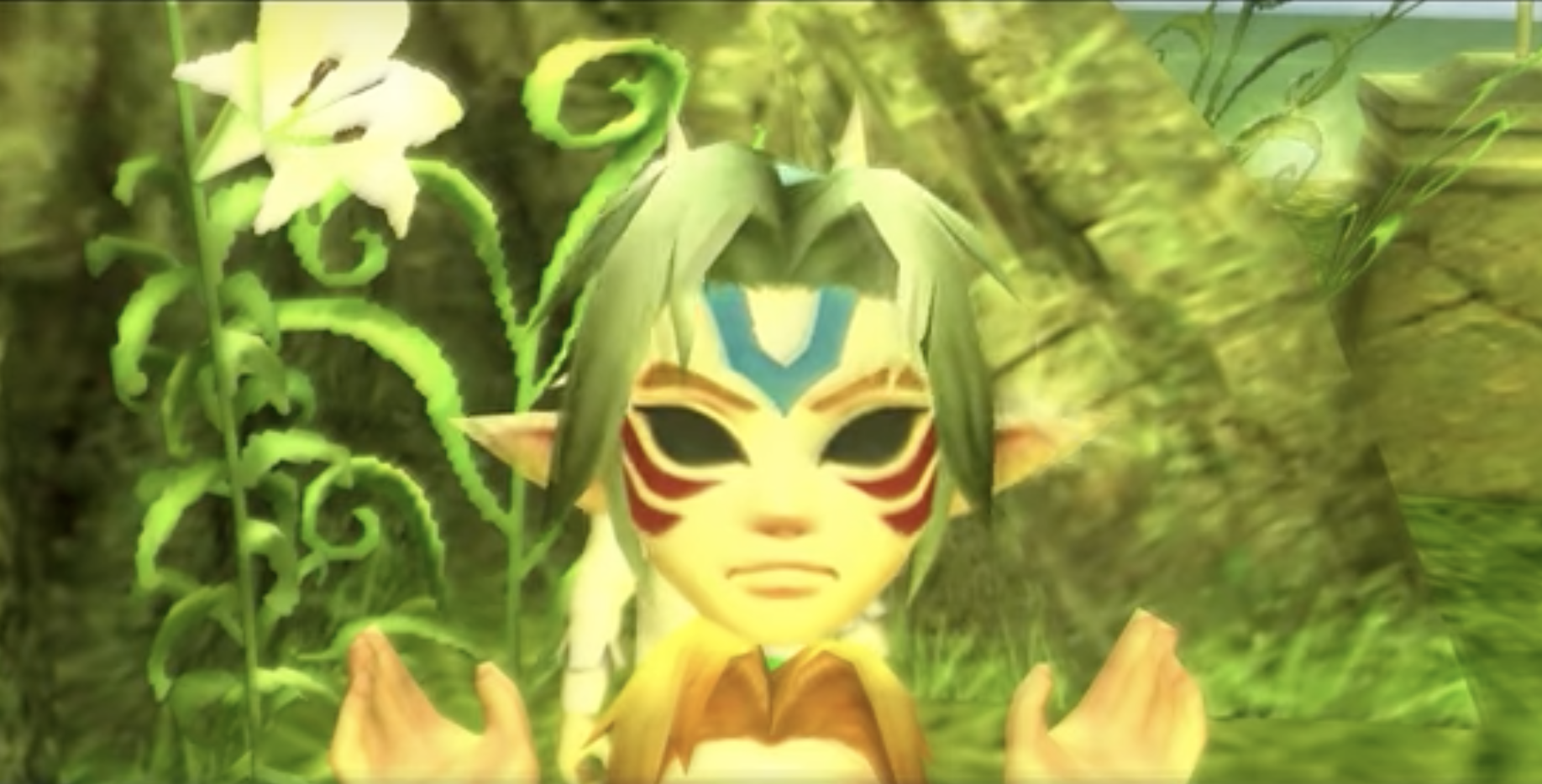
“The best way to think about it is that the memories of all the people of Termina are inside of the Fierce Deity Mask.”
Eiji Aonuma. “Aonuma Answers More Majora’s Mask Questions.” Zelda Dungeon. 2015
The mask is the culmination of Link’s efforts, the culmination of the hopes and dreams, big and small, of the people of Termina that Link helped bring to fruition. In a way, the Fierce Deity is Link, symbolized by the mask and the transformation both bearing a stunning resemblance to his adult form. Link is both the boy who danced with chickens and the warrior who slew Ganondorf — Link is the one who freed the Giants and the one who helped two lost lovers reunite.
One of the children of the moon asks who Link is under the mask, and ironically, the Fierce Deity, a mask itself, is the answer. Unlocking this part of Link, the Link who has confronted grief and come out all the better for it, trivializes the fight with Majora. It deals massive damage and soaks up damage in return because after all Link’s done, all he’s been through, something like Majora is just another walk in the park.
Dawn Of A New Day
Majora’s defeated and the mask purified, Tatl and Tael are reunited, and Skull Kid gets to see that his friends never forgot him and still love him — that he’s forgiven.
“Whenever there is a meeting, a parting is sure to follow. However, that parting need not last forever. Whether a parting be forever or merely for a short time… That is up to you.”
Happy Mask Salesman. “majora’s Mask.” Nintendo. 2000.
Link makes the choice to part with Tatl and to take off on his next adventure, makes the choice to continue his journey, a choice he never got at the end of “Ocarina of Time.” Maybe Link will meet Navi again, maybe Link will return to Termina and see the people of Clock Town again, but this time he gets to choose. Link never really needed to find Navi, he just needed to find himself and to understand that the suffering he went through in “Ocarina of Time” could be molded and healed into the kindness and empathy he shows in “Majora’s Mask.”

In a lot of ways, that speaks to the core message of both of these games: growing up comes with hardship and pain, but with that comes perspective you never had before. To grow up means to experience this, but to truly gain maturity means to deal with those hardships, to endure and understand that pain, and to let it go. Coming to terms with his growth from “Ocarina of Time” is the true journey of “Majora’s Mask” as Link realizes it’s okay to grieve, mourn, and forgive. Things may seem dark, may seem futile, but there’s always a light at the end of the tunnel that you can strive to reach. There’s always hope — Link just needed a little help to see it.
